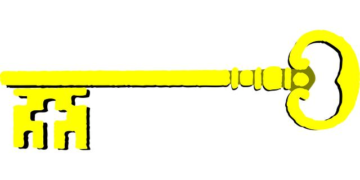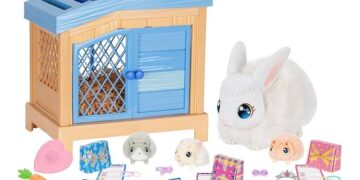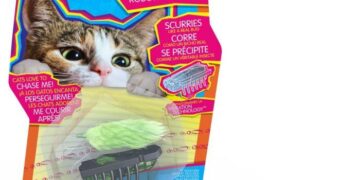Table of Contents
The Day a “Good” Dog Toy Broke My Dog’s Tooth—and My Trust in Standard Advice
As a veterinary professional, I’ve dedicated my life to the health and well-being of animals.
As a dog owner, my Golden Retriever, Buster, is the center of my world.
You would think, then, that my own dog would be the safest, most well-cared-for animal on the planet.
You would think I’d be immune to the misinformation and clever marketing that can lead well-meaning owners astray.
You would be wrong.
I remember the evening with painful clarity.
It was a quiet Tuesday, and Buster was happily occupied with his favorite chew toy in the living room.
It was a rock-hard nylon bone, one of those brands aggressively marketed as “indestructible” and “great for dental health.” I’d bought it for that very reason, feeling like a responsible owner providing a durable outlet for his chewing instincts while also cleaning his teeth.
The rhythmic, contented gnawing was a familiar and comforting sound in our home.
Then came a different sound.
A sharp, sickening crack that cut through the quiet of the room, followed instantly by a pained yelp.
Buster dropped the toy and looked at me, confused and hurt.
My heart sank.
I knew that sound.
It wasn’t the toy breaking; it was something far worse.
A frantic, gentle examination of his mouth confirmed my fears.
A large, diagonal piece of his biggest, most important chewing tooth—the upper fourth premolar, or carnassial tooth—had sheared off.
It was a classic slab fracture, one of the most common and serious dental injuries we see in dogs.1
The piece was gone, likely swallowed, and the sensitive inner pulp of the tooth was dangerously close to being exposed.
The vet visit that followed was humbling.
As I sat on the client side of the exam table, the familiar discussion of anesthesia, dental X-rays, and the high probability of a costly and painful extraction felt surreal.4
The final bill was over a thousand dollars, but the financial cost was nothing compared to the weight of my guilt.
I had done this to him.
I, a vet, had followed the conventional wisdom that a “tough” toy was a “good” toy and, in doing so, had given my best friend an object that acted more like a hammer than a toothbrush against his teeth.
That day, the hard nylon bone didn’t just break Buster’s tooth; it shattered my trust in the standard advice many of us have been fed for years.
It set me on a journey to understand not just what went wrong, but why the very logic we use to choose these products is fundamentally flawed.
It forced me to question everything I thought I knew and to search for a new framework—one based not on marketing claims of durability, but on the simple, unyielding principles of safety and effectiveness.
This is the story of that journey, and the powerful, practical system it produced.
It’s the guide I wish I’d had before that awful cracking sound changed everything, and it’s the knowledge I now share to protect your best friend from the same fate.
The Silent Epidemic: Why 80% of Dogs Suffer from Dental Disease
Before we can understand why the wrong toy is so dangerous, we have to grasp the true nature of the enemy we’re fighting.
It’s not just “doggie breath” or a bit of yellowing on the teeth.
The real enemy is periodontal disease, a silent, progressive, and overwhelmingly common condition.
By the time they are just three years old, over 80% of dogs already show signs of this disease.5
It is, without a doubt, the most common health problem affecting our canine companions.
The process begins insidiously with plaque.
Within hours of a meal, a soft, sticky biofilm made primarily of bacteria begins to form on the tooth surface.4
At this stage, plaque is invisible and easily removed.
But if it’s left undisturbed for as little as 24 to 48 hours, the minerals in your dog’s saliva begin to harden it into tartar, also known as calculus.10
This tartar is a hard, yellowish-brown deposit that adheres firmly to the teeth, creating a rough surface that invites even more plaque to accumulate.
Unlike soft plaque, tartar cannot be brushed away; it requires professional scaling to be removed.1
This buildup of plaque and tartar is what launches the four-stage assault of periodontal disease:
- Stage 1: Gingivitis. The bacteria in the tartar irritate the gums, causing inflammation. You might notice a red, swollen gum line (gingivitis) and some bad breath (halitosis).13 At this stage, the damage is completely reversible with a professional cleaning and consistent home care.
- Stage 2: Early Periodontitis. If gingivitis is left untreated, the inflammation progresses. The attachment between the tooth and gum begins to break down, forming small pockets. This is where the disease crosses a critical threshold from reversible to irreversible, as some of the supporting bone structure is lost.12
- Stage 3: Moderate Periodontitis. The pockets around the teeth deepen, trapping more food and bacteria. Significant bone loss (up to 50%) occurs, and the gums may recede, exposing the sensitive tooth roots. Teeth can become loose, and the pain becomes more significant.12
- Stage 4: Advanced Periodontitis. The final stage is characterized by extensive destruction of the supporting bone and tissue—more than 50% is gone. Teeth become very loose, abscesses are common, and teeth may fall out on their own.7 The dog is in a state of chronic, severe pain.
The consequences of this disease are not confined to the mouth.
The mouth is a gateway to the rest of the body.
The bacteria thriving in those infected gums can easily enter the bloodstream, a condition known as bacteremia.4
Once circulating, these bacteria can seed infections in vital organs, leading to serious and sometimes life-threatening changes in the heart, kidneys, and liver.5
A “dental problem” is, in fact, a whole-body health problem.
So, if this disease is so common and so devastating, why does it so often go unnoticed until it’s reached the advanced, irreversible stages? The answer lies in a heartbreaking evolutionary trait: dogs are masters at hiding pain.
In the wild, showing weakness makes an animal vulnerable to predators or abandonment by its pack.14
This instinct is deeply ingrained in our domestic dogs.
They won’t cry out or stop eating, which are the signals we humans typically look for.18
Instead, they suffer in silence.
A dog with a painful mouth might simply chew on the other side, swallow its kibble whole, become irritable, or seem less interested in playing with toys.2
These subtle signs are all too easily dismissed as quirks of personality or normal signs of aging.
This creates a dangerous disconnect between what the owner sees and what the dog is feeling.
We wait for a clear signal of distress, but by the time that signal appears, the disease has already won significant ground.
We cannot afford to be reactive; we must be proactive.
The Great Durability Deception: How We Were Taught to Choose Toys That Harm Our Dogs
After Buster’s injury, I became obsessed.
I walked the aisles of pet stores with new eyes, and what I saw horrified me.
An entire industry seemed to be built on a single, dangerous premise: that for a chew toy, durability is the ultimate virtue.
The packaging screams it with words like “indestructible,” “power chew,” and “long-lasting.” We’ve been conditioned to believe that a toy our dog can’t destroy is a successful toy.
This is the Great Durability Deception.
The very products most heavily marketed for their toughness are the ones that fill veterinary dental clinics with emergency cases.
The rogues’ gallery of tooth-breakers is well-known to every veterinary dentist: natural antlers (deer, elk), cooked and raw bones, cow hooves, Himalayan yak chews, and ultra-hard nylon or plastic toys.2
I found countless stories online from devastated owners, echoing my own experience—a happy dog chewing, a sudden crack, and an expensive, painful outcome.24
Veterinary professionals in forums and articles confirmed it: these items are a primary cause of slab fractures.3
Why does this happen? The logic seems simple, but it’s based on a fundamental misunderstanding of physics and biology.
The marketing of these products taps into a very human desire for value.
A toy that lasts for weeks or months feels like a better investment than one that’s gone in a day.
This creates a powerful mental shortcut for consumers: Durability = Quality.
But this equation ignores the other side of the interaction: the tooth.
A dog’s tooth is a living structure, and its enamel is not infinitely strong.
In fact, a dog’s enamel is significantly thinner than human enamel.3
When you combine this with the incredible bite force dogs can generate—up to 3,417 Newtons at the molars—you have a recipe for disaster.3
When a dog’s tooth (a very hard object) clamps down with immense force on a chew toy that is
even harder, something has to give.
It won’t be the toy.
It will be the tooth.
The very “indestructibility” we paid for becomes a weapon against our dog’s dental health.
The marketing has sold us on a flawed premise, encouraging us to prioritize the longevity of an inanimate object over the integrity of our living, breathing companion’s body.
An Unlikely Epiphany: What Industrial Polishing Taught Me About Safely Cleaning Teeth
In the weeks after Buster’s surgery, while he was recovering and I was wrestling with my guilt, I threw myself into a completely unrelated hobby: restoring old tools.
This involved a lot of research into materials science, specifically how to clean and polish hardened steel without damaging its surface.
And it was there, in a forum about industrial abrasives, that I had my epiphany.
I learned that when a professional polishes a delicate surface, like a gemstone or a high-tolerance metal part, they never use a tool that is harder than the surface itself.
Doing so wouldn’t polish; it would gouge, scratch, and destroy.
Instead, they use a softer polishing wheel combined with a very fine abrasive compound.
The friction and the gentle abrasive action of the compound slowly and safely wear away the microscopic imperfections, leaving a mirror-smooth finish.
The polishing wheel is the consumable part of the process; it is designed to wear down in service of preserving the more valuable object.
Suddenly, everything clicked into place.
This was it.
This was the model for how a dental toy should work.
We had been thinking about it all wrong.
The goal of a dental toy isn’t to be an indestructible anvil for our dogs to hammer their teeth against.
The goal is Safe Abrasion.
The toy itself should be the “polishing wheel”—softer than the tooth enamel it is meant to clean.
Its job is to serve as a delivery vehicle for mechanical friction.
Its textured surfaces, when chewed, should gently rub against the tooth, physically scraping away the soft, sticky plaque before it has a chance to harden into tartar.
The toy is meant to be the consumable in this equation.
A toy that is slowly and safely worn down over weeks of chewing, all while keeping the teeth clean, is a resounding success.
A rock-hard toy that lasts forever but breaks a tooth is an absolute failure, no matter how “durable” it Is.
This simple analogy—Safe Abrasion vs. Destructive Gouging—changed everything.
It gave me a new lens, a new way to see the problem.
The measure of a good dental toy is not “how long did the toy last?” but “how much plaque did it safely remove?” This shift in perspective is the key.
It’s the foundation for a new, safer, and far more effective way of choosing the tools to protect our dogs’ oral health.
The “Safe Abrasion” System: A Vet’s 4-Point Framework for Choosing the Perfect Dental Toy
Armed with my new understanding, I developed a simple, four-point framework that any dog owner can use to move beyond the marketing hype and make truly informed decisions.
This “Safe Abrasion” system transforms the confusing and often contradictory advice into a clear, actionable checklist.
Pillar 1: The Hardness Check (The “Thumbnail Test”)
This is the most critical first step, a non-negotiable safety gate.
Before you even consider a toy’s effectiveness, you must ensure it’s not dangerously hard.
The best and simplest method, widely recommended by veterinary dental specialists, is the “Thumbnail Test”.21
- How it works: Press your thumbnail firmly into the surface of the chew toy. If you cannot make a dent or an indentation, the toy is too hard and poses a significant risk of fracturing your dog’s teeth.
There are a couple of other common-sense rules that support this principle:
- The Bend Test: If the toy is completely rigid and has no flexibility or “give” when you try to bend it, it’s likely too hard.21
- The Knee Test: This one is brutally simple. As one veterinarian put it, don’t give your dog anything you wouldn’t want to be hit hard with on your own kneecap.1 If the thought of that impact makes you wince, don’t give it to your dog to chew with their teeth.
If a toy fails any of these tests, put it back on the shelf.
It doesn’t matter what the packaging claims; it’s not worth the risk.
Pillar 2: Texture as a Tool
Once a toy has passed the hardness check, its effectiveness comes down to its texture.
A smooth surface, even if it’s the right softness, won’t do much cleaning.
Texture is what provides the mechanical abrasion needed to scrape away plaque.
Look for toys with varied and interesting surfaces designed to clean 31:
- Nubs and Bristles: These features act like the bristles on a toothbrush, getting into the small crevices on the tooth surface.
- Ridges and Grooves: These help scrape larger surfaces of the teeth and can also massage the gums, which promotes good circulation and gum health.32
- Woven or Fibrous Textures: Found in rope toys, these can act like a form of dental floss, helping to clean between teeth. However, these require strict supervision to ensure the dog doesn’t ingest long strands.
The more varied and complex the texture, the more likely it is to clean different parts of the tooth as your dog chews.
Pillar 3: The Chewer Profile
There is no single “best” dental toy, because there is no single type of dog.
The right choice is highly dependent on your individual dog’s age, size, and chewing style.
Matching the toy to the dog is essential for both safety and engagement.
I break dogs down into five general profiles:
- The Teether (Puppy): Puppies have delicate, developing teeth and sore gums. They need softer, more forgiving materials like specialized puppy rubber or nylon that can soothe their discomfort without causing damage.36
- The Nibbler (Gentle Chewer): These dogs are less destructive and may prefer softer toys. Plush toys (with supervision) or softer rubber toys are often suitable.
- The Enthusiast (Moderate Chewer): This category fits most adult dogs. They enjoy a good chew session but aren’t obsessed with total destruction. They do well with classic rubber toys and most edible dental chews.
- The Demolition Expert (Power Chewer): These are the dogs for whom the “indestructible” marketing was created. They have strong jaws and a relentless drive to chew. They require the most durable materials available that still pass the thumbnail test, such as tough, specially formulated rubber (like the KONG Extreme line) or dense nylon.33
- The Connoisseur (Senior): Older dogs may have more sensitive teeth and gums, or existing dental issues. Like puppies, they often need softer, more forgiving materials that provide a satisfying chew without excessive force.23
Pillar 4: The VOHC Seal of Acceptance
This final pillar is your ultimate shortcut to choosing a product with proven effectiveness, especially for edible dental chews and treats.
The Veterinary Oral Health Council (VOHC) is an independent organization that reviews scientific data from manufacturers.43
- What it means: When you see the VOHC Seal on a product, it is a guarantee that the product has undergone rigorous clinical trials following strict protocols and has been scientifically proven to significantly reduce either plaque or tartar (the seal will specify which).4
- Why it matters: The pet treat aisle is filled with products making vague dental claims. The VOHC seal cuts through the marketing noise. It’s the difference between a company saying their product works and a company proving it works to a board of veterinary dental experts.9 While many non-edible toys don’t go through this process, for anything your dog will consume, looking for this seal is one of the smartest moves you can make.
By applying these four pillars—Hardness, Texture, Profile, and VOHC Validation—you can systematically and confidently evaluate any dental toy and make a choice that truly benefits your dog’s health.
The Vet-Approved Arsenal: Matching the Right Toy to Your Dog’s Needs
With the “Safe Abrasion” framework in place, we can now build a practical arsenal of vet-approved dental toys.
The key is to match the right tool to the right job, which means selecting toys based on your dog’s specific chewer profile.
Below are my top recommendations, categorized to help you make the perfect choice for your companion.
For the Demolition Expert (Power Chewer)
This dog lives to chew, and your primary challenge is finding something that is both satisfyingly durable and safe.
The temptation to reach for rock-hard options is immense, but it must be resisted.
- Best Materials: Dense, specialized rubber and tough nylon formulations.
- Top Recommendations:
- KONG Extreme Line (Black Rubber): This is the gold standard for power chewers. The black rubber is KONG’s most durable formula but still retains a slight “give” that makes it safer than rigid plastics or bone.48 The classic KONG Extreme can be stuffed with food to extend chewing sessions and provide mental enrichment. Always size up if you’re unsure.
- Goughnuts MAXX Pro 50 Toys: Designed with safety as the top priority, these heavy-duty rubber toys often feature a red inner core. If your dog chews through to the red, the company will replace the toy, providing a built-in safety indicator.38
- Select Nylabone Power Chews: Nylabone offers a wide range of products, and it’s crucial to select from their “Power Chew” or “DuraChew” lines made for aggressive chewers.32
Crucially, you must still apply the thumbnail test to each specific toy, as hardness can vary. Look for those with varied textures to maximize cleaning action. - Safety Note: Even with these tough toys, supervision is key. The goal is for the dog to gnaw and scrape, not to break off and ingest large chunks.
For the Enthusiast (Moderate Chewer)
This is the average adult dog who enjoys chewing but doesn’t make it a life’s mission to destroy everything.
You have a much wider array of safe and effective options.
- Best Materials: Classic rubber, flexible nylon, and VOHC-accepted edible chews.
- Top Recommendations:
- KONG Classic (Red Rubber): The iconic red KONG is perfect for most adult dogs. It’s durable enough for satisfying chewing but soft enough to be safe.31 Stuffing and freezing it is a fantastic way to keep a dog entertained and engaged in healthy chewing.
- West Paw Zogoflex Toys: These toys are known for their durability and unique, engaging shapes. They are tough but have a pleasant, pliable feel that passes the thumbnail test.38
- VOHC-Accepted Edible Chews: This is the ideal category for moderate chewers.
- Greenies™ Dental Treats: One of the most well-known and VOHC-accepted options, Greenies have a unique, chewy texture designed to flex around the tooth for maximum cleaning.47 They come in various sizes and formulas (e.g., weight management, aging care).52
- Virbac C.E.T.® VeggieDent® Chews: These plant-based, VOHC-accepted chews are a great option for dogs with protein sensitivities. Their unique “Z-shape” is designed to scrape teeth from multiple angles as the dog chews.45
For the Teether (Puppy) and The Connoisseur (Senior)
These two groups have similar needs: their mouths are more sensitive, and they require softer materials that are gentle on developing teeth or aging gums.
- Best Materials: Soft, flexible rubber and specially formulated puppy/senior nylon.
- Top Recommendations:
- KONG Puppy & Senior Lines: KONG offers specific formulas for these life stages. The KONG Puppy toy is made from a softer, more flexible pink or blue rubber to soothe teething gums, while the KONG Senior toy uses a gentler purple rubber for aging chewers.23
- Nylabone Puppy & FlexiChew Lines: Nylabone’s puppy-specific chews are made with softer materials, and their “FlexiChew” or “Moderate Chew” lines are also suitable for seniors or gentle chewers.37
- Benebone Puppy Line: These chew toys are also made with a slightly softer material that’s more forgiving for teething pups, while still being durable.37
- VOHC-Accepted Puppy/Senior Chews: Greenies offers “Aging Care” and “Puppy” formulas that are VOHC-accepted and tailored to the needs of these life stages.36
The Canine Dental Toy Selection Matrix
To simplify your decision-making process, use this matrix.
First, identify your dog’s profile in the top row.
Then, look at the toy categories in the left column to find the best-fit options with key safety checks.
| Toy Category | Puppy / Teething | Gentle / Senior | Moderate Adult | Power Adult |
| Flexible Rubber Toys | Top Examples: KONG Puppy, KONG Senior Features: Soft, pliable rubber designed to soothe gums and be gentle on teeth. Safety Check: Ensure toy is appropriately sized to prevent choking. Discard if damaged. | Top Examples: KONG Senior, West Paw Zogoflex Features: Gentle but durable rubber that satisfies the need to chew without stressing older teeth. Safety Check: Monitor for wear and tear, especially with dogs that have missing or damaged teeth. | Top Examples: KONG Classic (Red), Planet Dog Orbee-Tuff Features: Durable enough for regular chewing with good flexibility. Many can be stuffed for enrichment. Safety Check: Choose a size larger than you think you need to prevent accidental ingestion. | Top Examples: KONG Extreme (Black), Goughnuts MAXX Features: Densest, most durable rubber formulas that still pass the thumbnail test. Safety Check: The ultimate test of durability. Supervise closely and inspect regularly for damage. |
| Durable Nylon Toys | Top Examples: Nylabone Puppy Chews, Benebone Puppy Dental Chew Features: Softer nylon formulation with gentle textures for teething. Safety Check: Supervise to ensure puppy is gnawing, not breaking off large pieces. | Top Examples: Nylabone FlexiChew Features: More flexible nylon for a gentler chewing experience. Safety Check: Check for sharp edges as the toy wears down; sand them smooth or discard. | Top Examples: Nylabone DuraChew, Benebone Wishbone Features: Harder nylon for satisfying chewing. Flavored to maintain interest. Safety Check: Must pass the thumbnail test. Discard when ends are worn down or if large pieces break off. | Top Examples: Nylabone Power Chew, select Benebone products Features: Toughest nylon available, designed for extreme chewers. Safety Check: The thumbnail test is non-negotiable. High risk of fracture if too hard. Supervise constantly. |
| VOHC-Accepted Edible Chews | Top Examples: Greenies Puppy Dental Chews Features: VOHC-accepted for plaque/tartar control with a softer texture for young dogs. Safety Check: Give one per day as directed. Ensure puppy chews thoroughly. | Top Examples: Greenies Aging Care Chews Features: VOHC-accepted with a texture and ingredients (e.g., joint support) suited for seniors. Safety Check: Ensure the dog can still chew them effectively without swallowing large pieces. | Top Examples: Greenies Original, Virbac C.E.T. VeggieDent, Milk-Bone Brushing Chews Features: Scientifically proven to reduce plaque and/or tartar. Safety Check: Choose the correct size for your dog’s weight. Monitor for any digestive upset. | Top Examples: Purina Pro Plan Dental Chewz Features: Some VOHC-accepted chews are designed to be longer-lasting for more powerful chewers. Safety Check: Can be consumed very quickly by some dogs, reducing effectiveness. Always supervise. |
| Interactive/Treat-Dispensing Toys | Top Examples: KONG Puppy, West Paw Toppl (Small) Features: Provides mental stimulation and encourages safe chewing habits from a young age. Safety Check: Use puppy-safe fillings (e.g., their own kibble soaked in water and frozen). | Top Examples: KONG Senior, various food puzzles Features: Excellent for low-impact mental enrichment for less mobile dogs. Safety Check: Ensure the puzzle is not too complex to cause frustration. | Top Examples: KONG Classic, RUFFWEAR Gnawt-a-Rock Features: Makes chewing a rewarding challenge, preventing boredom. Safety Check: Clean regularly to prevent bacteria buildup from food remnants. | Top Examples: KONG Extreme, West Paw Tux Features: The most durable treat-dispensing toys on the market. Safety Check: Ensure the toy itself is durable enough for unsupervised access (once the dog is accustomed to it). |
A New Promise for Our Dogs’ Health, One Safe Chew at a Time
Today, Buster’s dental health is excellent.
His annual veterinary checkups consistently reveal clean teeth and healthy gums.
The painful memory of that Tuesday evening has faded, replaced by the quiet confidence of a new routine.
His favorite toy is now a large, red KONG Classic.
I often stuff it with a bit of his kibble mixed with dog-safe peanut butter and freeze it.
He’ll spend a happy half-hour working diligently at it, his chewing focused and productive.
The soft, durable rubber massages his gums and scrapes his teeth clean, all without posing any threat of fracture.
He gets the satisfaction of a good chew, and I get the peace of mind that I am providing him with something that is both enriching and safe.
Our journey, which began with a painful failure, has ended in a quiet, daily success.55
This transformation was only possible because I abandoned the flawed logic of the durability deception and embraced the simple science of safe abrasion.
My promise to you, and to the dog you love, is that you can do the same.
You don’t need a veterinary degree—you just need a new perspective.
Let’s recap the framework that will empower you to protect your dog’s smile:
- Prioritize Safety with the Hardness Check: Before anything else, apply the thumbnail test. If you can’t make a dent, the toy is a danger, not a dental aid.
- Harness the Power of Texture: Look for nubs, ridges, and varied surfaces. A toy’s softness makes it safe, but its texture makes it effective.
- Honor Your Dog’s Individual Profile: Match the toy’s material and toughness to your dog’s unique chewing style and life stage, from the gentle puppy to the powerful adult.
- Trust the Science of the VOHC Seal: When choosing edible chews, let the VOHC seal be your guide. It is the only true guarantee of proven effectiveness.
I urge you to take a few minutes today.
Go to your dog’s toy box and pick up each chew toy.
Apply the thumbnail test.
Be honest and ruthless.
If you find toys that are as hard as a rock—antlers, hooves, or rigid nylon bones—I implore you to throw them away.
It may feel wasteful, but it is a small price to pay to avoid the pain, risk, and expense of a fractured tooth.
By replacing those dangerous items with safer, more effective alternatives, you are not just buying a new toy.
You are making a new promise to your dog.
You are promising to protect them not only with your love but with your knowledge.
You are transforming your good intentions into truly good care, ensuring that every chew is a step toward a longer, healthier, and happier life together.
Works cited
- Common Dental Problems in Dogs – Lincoln Road Veterinary Clinic, accessed August 12, 2025, https://www.lincolnroadvet.com/site/blog/2022/11/30/common-dental-problems-in-dogs
- Common Dental Problems in Dogs – All Bay Animal Hospital, accessed August 12, 2025, https://www.allbayanimalhospital.com/site/blog/2023/05/30/common-dental-problems-in-dogs
- Advise clients ‘durable’ treats are not worth the risk of tooth fractures, tissue injuries, accessed August 12, 2025, https://www.veterinarypracticenews.com/durable-treats-dental-risks/
- Dental disease and home dental care | Cornell University College of Veterinary Medicine, accessed August 12, 2025, https://www.vet.cornell.edu/departments-centers-and-institutes/riney-canine-health-center/canine-health-information/dental-disease-and-home-dental-care
- Pet dental care | American Veterinary Medical Association, accessed August 12, 2025, https://www.avma.org/resources-tools/pet-owners/petcare/pet-dental-care
- Cleaning Your Dogs Teeth – Dog Dental Health – RSPCA, accessed August 12, 2025, https://www.rspca.org.uk/adviceandwelfare/pets/dogs/health/teeth
- Dog Periodontal Disease: Stages & Treatment – Forever Vets, accessed August 12, 2025, https://forevervets.com/blog/dog-periodontal-disease-stages-and-treatment
- 4 Tips to Improve Your Pet’s Dental Health – Naples Coastal Animal Hospital, accessed August 12, 2025, https://naplescoastalvet.com/4-tips-to-improve-your-pets-dental-health/
- Difference Between Dog Plaque vs. Tartar — ORAVET® Dental Chews, accessed August 12, 2025, https://oravet.com/dog-plaque-vs-tartar
- Common Dental Problems in Dogs – The Animal Medical Center of Fort Oglethorpe, accessed August 12, 2025, https://www.amcveterinarian.com/site/blog/2024/06/15/common-dental-problems-dogs
- Common Dental Problems in Dogs | Choice Veterinary Specialists, accessed August 12, 2025, https://www.choicevs.com/site/blog/2024/02/15/common-dental-problems-dogs
- Periodontal Disease in Dogs: Symptoms, Causes & Treatment, accessed August 12, 2025, https://www.lakecross.com/site/blog-huntersville-vet/2020/07/22/periodontal-disease-dogs-symptoms-treatment
- The Speed of Periodontal Disease Progression in Dogs, accessed August 12, 2025, https://missoulavetdentist.com/the-speed-of-periodontal-disease-progression-in-dogs/
- Stages of Periodontal Disease in Dogs – Animal Dental Care, accessed August 12, 2025, https://www.wellpets.com/blog/185-periodontal-disease-stages-dogs/
- Periodontal Disease in Dogs: Symptoms, Causes & Treatment – Mamaroneck Veterinary Hospital, accessed August 12, 2025, https://www.mamaroneckvet.com/site/blog/2022/07/30/periodontal-disease-in-dogs-symptoms-causes–treatment
- How Dental Care Keeps Your Pet Healthy and Happy – Veterinary Teaching Hospital, accessed August 12, 2025, https://vth.vetmed.vt.edu/animal-care-tips/pet-dental-care.html
- Do Dogs Need Dental Care? — Dog Myths Debunked, accessed August 12, 2025, https://www.akc.org/expert-advice/health/dog-dental-myths-debunked/
- Pet Dental Health: Fact or Fiction? – Cummings School of Veterinary Medicine, accessed August 12, 2025, https://vet.tufts.edu/news-events/news/pet-dental-health-fact-or-fiction
- Debunking Pet Dental Care Myths, accessed August 12, 2025, https://www.wellpets.com/blog/debunking-common-myths-about-pet-dental-care/
- Vets Guide to Dental Health in Dogs: 10 Tips for Clean Teeth, accessed August 12, 2025, https://metrovetclinic.com/resources/dental-health-in-dogs/
- Protect Your Pet’s Teeth: Top Tips from a Veterinary Dentist …, accessed August 12, 2025, https://www.vetmed.wisc.edu/protect-pets-teeth/
- How to Choose Edible Dog Chews That Are Also Safe – American Kennel Club, accessed August 12, 2025, https://www.akc.org/expert-advice/nutrition/choosing-edible-chews-for-dogs/
- Chew Toys for Senior Dogs | Paws At Home Vermont Veterinarian, accessed August 12, 2025, https://www.pawsathomevt.com/chew-toys-for-senior-dogs/
- Broken canine tooth | Ultimate Pheasant Hunting Forums, accessed August 12, 2025, https://forum.ultimatepheasanthunting.com/threads/broken-canine-tooth.9913/
- Fractured carnassial tooth… – Positively | Victoria Stilwell | Forum, accessed August 12, 2025, https://forum.positively.com/viewtopic.php?t=15168
- Antlers – Caused fractured teeth, I feel awful and guilty. : r/puppy101 – Reddit, accessed August 12, 2025, https://www.reddit.com/r/puppy101/comments/1gk989e/antlers_caused_fractured_teeth_i_feel_awful_and/
- [Help] Are antlers safe? (Worried about teeth.) : r/dogs – Reddit, accessed August 12, 2025, https://www.reddit.com/r/dogs/comments/9uejwp/help_are_antlers_safe_worried_about_teeth/
- Has your dog had any issues with antlers? – Reddit, accessed August 12, 2025, https://www.reddit.com/r/dogs/comments/skqazi/has_your_dog_had_any_issues_with_antlers/
- PSA: Hard chews REALLY do break teeth : r/corgi – Reddit, accessed August 12, 2025, https://www.reddit.com/r/corgi/comments/1b1thk0/psa_hard_chews_really_do_break_teeth/
- How often do you see dental cases that result from dogs chewing on bones/antlers? – Reddit, accessed August 12, 2025, https://www.reddit.com/r/AskVet/comments/2mzaz2/how_often_do_you_see_dental_cases_that_result/
- Chews Wisley: The Best Toys for Protecting Your Dog’s Teeth, accessed August 12, 2025, https://missoulavetdentist.com/best-toys-for-protecting-dogs-teeth/
- Power Chew Easy-Hold Dog Dental Chew Toy – Nylabone, accessed August 12, 2025, https://www.nylabone.com/products/product-type/chew-toys/power-chew/power-chew-easy-hold-dog-dental-chew-toy
- Redbarn Dental Chews for Dogs | All-Natural Treats and Chews, accessed August 12, 2025, https://www.redbarn.com/collections/dental
- Daily Dental Chicken Power Chew Toy – Nylabone, accessed August 12, 2025, https://www.nylabone.com/products/product-type/chew-toys/power-chew/daily-dental-power-chew
- Nylabone Dental Chews Review – Dog vs. Dinosaur! – MyDogLikes, accessed August 12, 2025, https://mydoglikes.com/nylabone-dinosaur-chew-toy/
- Toys For Senior Dogs With Bad Teeth – Petco, accessed August 12, 2025, https://www.petco.com/shop/en/petcostore/o/toys-for-senior-dogs-with-bad-teeth
- Puppy Dental Chew | Benebone: Durable Dog Chew Toys Made in the USA, accessed August 12, 2025, https://www.benebone.com/products/puppy-dental-chew
- Vet-Approved Dog Chew Toys for Heavy Chewers – City Line Veterinary Center, accessed August 12, 2025, https://citylinevet.com/veterinary-blog/dog-toys-for-chewers/
- Vet-Recommended Dog Chews: What Can Dogs Chew on Safely (& What They Can’t), accessed August 12, 2025, https://toegrips.com/safe-chewing-toys-for-dogs-chews-wisely/
- Durable Dog Chew Toys: Low Prices (Free Shipping) | Chewy, accessed August 12, 2025, https://www.chewy.com/b/chew-toys-316
- Chew Toys for Senior Dogs: A Complete Buying Guide – Talis Us, accessed August 12, 2025, https://talis-us.com/blogs/news/chew-toys-for-senior-dogs-a-complete-buying-guide
- BetterBone SOFT Durability CHEW TOY: Natural Ingredients, Perfet for T, accessed August 12, 2025, https://thebetterbone.com/products/betterbone-classic-all-natural-ingredients-dental-cleaning-ecofriendly-dog-puppy-chew
- Veterinary Oral Health Council | Finding the most effective route to good oral health for your dog or cat., accessed August 12, 2025, https://vohc.org/
- Choosing the Right Chew Toys and Treats for Your Pet: A Guide Backed by the VOHC, accessed August 12, 2025, https://www.tribecavetdentistry.com/post/choosing-the-right-chew-toys-and-treats-for-your-pet-a-guide-backed-by-the-vohc
- 7 Best Dental Chews for Dogs in 2025, Recommended by Vets | PetMD, accessed August 12, 2025, https://www.petmd.com/vet-verified/best-dental-chews-dogs
- Essential Pet Dental Care: Top Chews and Toys for Healthy Smiles | Northwood Veterinary Hospital, accessed August 12, 2025, https://northwoodveterinary.com/essential-pet-dental-care-top-chews-and-toys-for-healthy-smiles/
- Greenies Dog Dental Care Chews Review: Are They Worth It? – iHeartDogs.com, accessed August 12, 2025, https://iheartdogs.com/greenies-original-regular-dog-dental-care-chews-review/
- KONG | Dog Toys, Cat Toys, and Treats, accessed August 12, 2025, https://www.kongcompany.com/
- PRO Action Dental Power Chew Durable Dog Toy – Nylabone, accessed August 12, 2025, https://www.nylabone.com/products/product-type/chew-toys/power-chew/pro-action-dental-power-chew-durable-dog-toy
- Best Dental Chews For Dogs: 5 Vet-Approved Picks – Devil Dog Pet Co, accessed August 12, 2025, https://devildogpetco.com/blogs/the-devil-dog-blog/best-dental-chews-for-dogs
- Best Dental Chews for Dogs: Keep Your Pup’s Teeth Healthy – RESOURCE LIBRARY, accessed August 12, 2025, https://www.americanbreeder.com/resources/american-breeder-blog/dogs/best-dental-chews-for-dogs
- GREENIES™ Dog Dental Chews Keep Teeth Clean & Breath Fresh, accessed August 12, 2025, https://www.greenies.com/pages/dog-dental-treats
- Large Dental Treats And Chews For Bigger Dogs (50-100 lbs) – Greenies, accessed August 12, 2025, https://www.greenies.com/collections/greenies-large-dog-dental-treats
- C.E.T.® VEGGIEDENT® FR3SH® Tartar Control Chews for Dogs – Virbac, accessed August 12, 2025, https://vet-us.virbac.com/home/products/dental/cet-veggiedent-fr3sh-tartar-cont.html
- Pet Dental Success Stories – Brick Town Veterinary Hospital, accessed August 12, 2025, https://bricktownvet.com/services/pet-dental
- How Dental Health Can Add Years to Your Pet’s Life!, accessed August 12, 2025, https://petsrfamilyvet.com/love-at-first-smile-how-dental-health-can-add-years-to-your-pets-life/
- Kelly’s Story: The transformation of a sweet old Sheltie – Mainely Veterinary Dentistry, accessed August 12, 2025, https://mainelyvetdentistry.com/kellys-story-the-transformation-of-a-sweet-old-sheltie/






